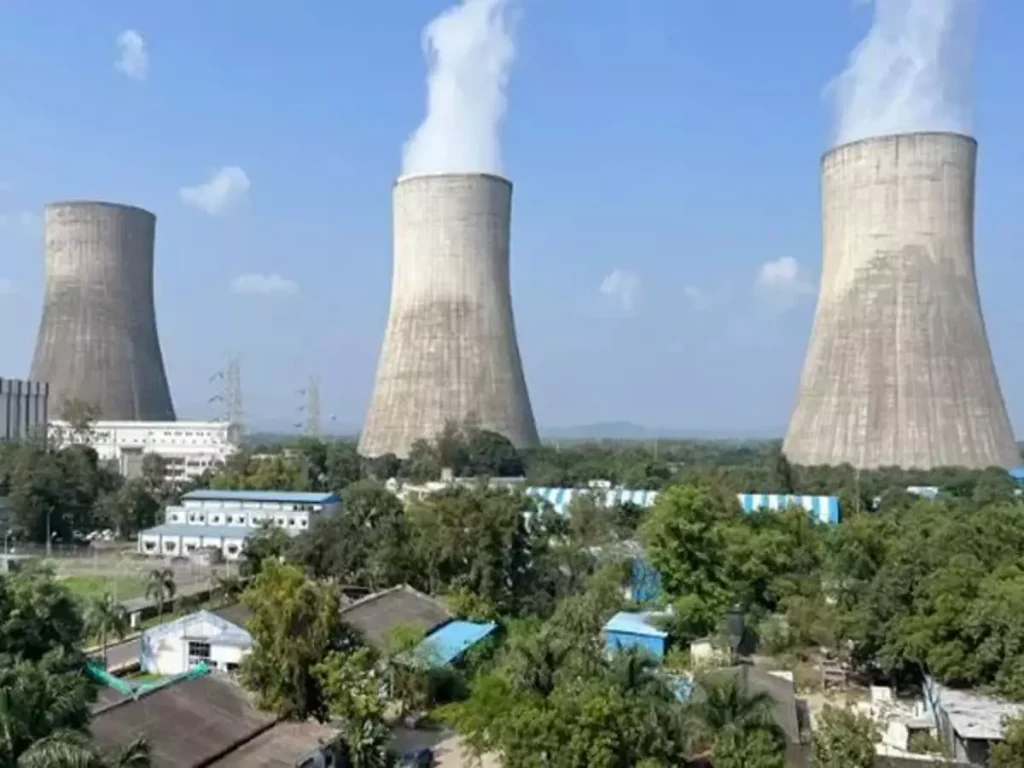Context:
The Union Budget 2025-26 launched the Nuclear Energy Mission.
More on the news:
- The Union Budget 2025-26 outlines a significant push towards nuclear energy as part of India’s long-term energy transition strategy.
- Recognizing nuclear power as a critical component for achieving energy security and sustainability, the government has introduced the Nuclear Energy Mission for Viksit Bharat.

Nuclear Energy Mission for Viksit Bharat
The mission aligns with India’s commitment to achieving 100 GW of nuclear energy capacity by 2047, a milestone deemed essential for reducing carbon emissions and meeting future energy demands.
To facilitate the implementation of the Nuclear Energy Mission, amendments to the Atomic Energy Act and Civil Liability for Nuclear Damage Act will be taken up by the parliament.
The government will enter into partnerships with the private sector for the following purposes:
(a) Setting up Bharat Small Reactors (BSRs): BSRs are 220 Megawatt electric [MW(e)] Pressurized Heavy Water Reactors (PHWRs) with a proven safety and performance record.
- The plan involves private entities providing land, cooling water, and capital, while the Nuclear Power Corporation of India Limited (NPCIL) handles design, quality assurance, and operation and maintenance, all within the existing legal framework.
(b) Research & development of Bharat Small Modular Reactor: SMRs provide a flexible, scalable, and cost-effective alternative to conventional large nuclear reactors.
- Nuclear Energy Mission is focused on research and development (R&D) of Small Modular Reactors (SMRs).
- Small modular reactors (SMRs) are advanced nuclear reactors that have a power capacity of up to 300 MW(e) per unit, which is about one-third of the generating capacity of traditional nuclear power reactors.
- The government has allocated ₹20,000 crore for this initiative, aiming to develop at least five indigenously designed and operational SMRs by 2033.
- Bhabha Atomic Research Centre (BARC) is developing Small Modular Reactors (SMRs) for repurposing retiring coal-based power plants and meeting power needs in remote locations.
(c) Research & development of newer technologies for nuclear energy.
- The Department of Atomic Energy (DAE) also plans to introduce new nuclear reactors, including high-temperature gas-cooled reactors for hydrogen co-generation and molten salt reactors aimed at utilizing India’s abundant thorium resources.
Government Initiatives for Enhancing India’s Nuclear Capacity
The government is aiming to expand nuclear power capacity from the current 8,180 MW to 22,480 MW by 2031-32.
- This expansion includes the construction and commissioning of ten reactors of 8,000 MW, across Gujarat, Rajasthan, Tamil Nadu, Haryana, Karnataka, and Madhya Pradesh.
The government also approved setting up of 6 x 1208 MW nuclear power plant in cooperation with the USA at Kovvada in Srikakulam, Andhra Pradesh.
Recent Developments in Nuclear Energy in India
- As of January 30, 2025, India’s nuclear capacity is 8180 MW.
- New deposits were discovered in India’s oldest Uranium Mine, the Jaduguda Mines, Jharkhand.
- The first two units of the indigenous 700 MWe PHWR at Kakrapar, Gujarat (KAPS – 3 & 4) have started commercial operation in FY 2023-24.
- NPCIL and National Thermal Power Corporation (NTPC) have signed a supplementary Joint Venture agreement called ASHVINI that will function under the Atomic Energy Act 1962 (amended in 2015) and will build, own, and operate nuclear power plants.

